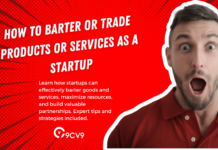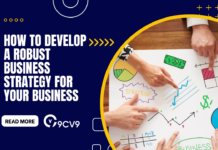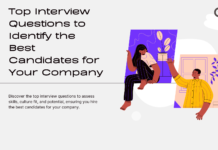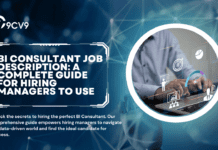Key Takeaways
- Fostering growth involves nurturing employee development through learning opportunities, mentorship, and clear career paths.
- It boosts retention, engagement, innovation, and overall organizational performance in a competitive market.
- Implementing structured strategies and measuring growth impact ensures sustainable success and workplace excellence.
In today’s fast-paced and ever-evolving business landscape, organizations can no longer rely solely on traditional management approaches to remain competitive. One of the most critical and forward-thinking strategies for long-term success lies in fostering growth in the workplace. But what does this term really mean? At its core, fostering growth refers to the intentional cultivation of an environment that supports and encourages the development of employees—professionally, personally, and collectively as part of a team or organization. It’s about more than just promotions or skills training; it’s a holistic approach that nurtures potential, builds capabilities, and aligns individual aspirations with organizational objectives.

With shifting employee expectations, the rise of remote and hybrid work models, and growing demands for purpose-driven employment, fostering growth has become a non-negotiable for businesses aiming to attract, retain, and empower top talent. Employees today are not just looking for a paycheck—they’re seeking meaningful opportunities to learn, grow, and contribute. Companies that fail to meet these expectations risk disengagement, high turnover, and a stagnating workforce. On the other hand, organizations that prioritize growth experience higher levels of motivation, innovation, loyalty, and overall performance.
Fostering growth in the workplace encompasses a range of practices, from offering structured learning and development programs to building a strong feedback culture, promoting internal mobility, encouraging cross-functional collaboration, and investing in leadership development. It also means creating a safe and inclusive environment where employees feel empowered to take risks, voice their ideas, and pursue continuous improvement. In essence, it’s about unlocking the full potential of every individual—no matter their role or level—and turning that potential into a powerful driver of business success.
Moreover, fostering growth is not only beneficial for employees; it’s equally transformative for the organization as a whole. A growth-oriented workforce is more adaptable to change, better equipped to handle challenges, and more capable of driving innovation across the business. In a time where digital transformation, automation, and global competition are reshaping industries, the ability to build and sustain a growth culture has become a key differentiator between companies that thrive and those that merely survive.
This comprehensive guide will delve deep into what fostering growth truly means in the context of the modern workplace. We will explore why it matters now more than ever, identify common barriers to growth, and outline practical, actionable strategies that leaders, HR professionals, and managers can implement to create a thriving, development-focused environment. Whether you’re a startup founder, a corporate executive, or an HR leader, understanding how to foster growth effectively is essential to building a resilient, high-performing workforce that is equipped for the future.
By the end of this blog, you’ll have a clear understanding of how to put growth at the heart of your workplace culture—resulting in a stronger organization, more engaged employees, and sustainable success in 2025 and beyond.
Before we venture further into this article, we would like to share who we are and what we do.
About 9cv9
9cv9 is a business tech startup based in Singapore and Asia, with a strong presence all over the world.
With over nine years of startup and business experience, and being highly involved in connecting with thousands of companies and startups, the 9cv9 team has listed some important learning points in this overview of What is Fostering Growth and How to do it in the Workplace.
If your company needs recruitment and headhunting services to hire top-quality employees, you can use 9cv9 headhunting and recruitment services to hire top talents and candidates. Find out more here, or send over an email to [email protected].
Or just post 1 free job posting here at 9cv9 Hiring Portal in under 10 minutes.
What is Fostering Growth and How to do it in the Workplace
- What Does Fostering Growth in the Workplace Mean?
- Why Fostering Growth Matters in 2025 and Beyond
- Key Benefits of Fostering Growth in the Workplace
- Common Barriers to Growth in the Workplace
- How to Foster Growth in the Workplace: 10 Proven Strategies
- Tools and Resources to Help Foster Growth
- Measuring the Impact of Fostering Growth
1. What Does Fostering Growth in the Workplace Mean?
Fostering growth in the workplace refers to strategically nurturing and enabling continuous development of employees, teams, and the organization. It goes beyond standard job training and encompasses skills enhancement, mindset development, leadership grooming, and organizational culture transformation.
It’s about creating an environment where employees feel valued, supported, and equipped to evolve both professionally and personally—contributing directly to business sustainability and innovation.
1. Core Dimensions of Fostering Growth
Fostering growth is not a one-dimensional concept. It spans across various layers of the workplace ecosystem:
a. Personal Growth
- Encouraging self-awareness, emotional intelligence, and work-life balance.
- Examples:
- Offering wellness programs and mental health support.
- Encouraging personal goal setting and journaling.
- Providing access to life coaching or resilience workshops.
b. Professional Growth
- Equipping employees with the tools, skills, and knowledge to perform better.
- Examples:
- Continuous Learning & Development (L&D) programs.
- Sponsoring certifications or degree programs.
- Rotational job assignments or stretch projects.
c. Team Growth
- Improving collaboration, cross-functional knowledge, and cohesion.
- Examples:
- Hosting team-building retreats or agile workshops.
- Using collaborative platforms like Miro or Trello.
- Encouraging peer learning and shared goals.
d. Organizational Growth
- Aligning talent development with broader business objectives.
- Examples:
- Succession planning and internal promotion pipelines.
- Leadership development programs.
- Innovation hubs or cross-functional task forces.
2. Key Characteristics of a Growth-Oriented Workplace
| Growth Factor | Traditional Workplace | Growth-Focused Workplace |
|---|---|---|
| Learning Culture | Sporadic training sessions | Ongoing L&D integrated into daily workflows |
| Feedback Mechanisms | Annual reviews | Real-time, continuous feedback |
| Career Advancement | Top-down promotions only | Transparent internal mobility and merit-based progression |
| Managerial Approach | Directive, task-based | Coaching and mentoring-led |
| Employee Autonomy | Micromanaged | Encouraged to take ownership and risks |
| Innovation Encouragement | Low tolerance for failure | Fail-fast, learn-fast environment |
3. Strategic Elements of Fostering Growth
a. Building a Learning Culture
- Embed learning into the workflow (e.g., microlearning via LMS).
- Recognize and reward upskilling behavior.
- Encourage mentorship and knowledge-sharing initiatives.
b. Encouraging a Growth Mindset
- Train leaders to model a growth mindset.
- Promote a culture of curiosity and experimentation.
- Shift from “know-it-all” to “learn-it-all” mentality.
c. Creating Clear Career Pathways
- Offer documented career ladders and role progression plans.
- Provide cross-training for role diversification.
- Use Individual Development Plans (IDPs) to align employee goals.
d. Implementing Feedback and Coaching Loops
- Facilitate regular one-on-ones between managers and staff.
- Invest in coaching certifications for team leads.
- Encourage 360-degree feedback practices.
4. Types of Growth Opportunities in the Workplace
| Category | Opportunities |
|---|---|
| Skill-Based | Technical training, cross-skilling, certifications |
| Role-Based | Promotions, lateral moves, role expansions |
| Experience-Based | Job shadowing, stretch assignments, international projects |
| Relational | Mentoring, coaching, peer learning communities |
| Behavioral | Leadership development, communication workshops, decision-making simulations |
5. Real-Life Examples of Fostering Growth in Action
Example 1: Google
- Career Growth: Offers 20% time for passion projects.
- Learning Culture: Provides access to internal MOOCs and peer-led training.
Example 2: Unilever
- Leadership Growth: Runs “Future Leaders Programme” to nurture global leaders.
- Team Growth: Emphasizes agile squads and collaborative innovation labs.
Example 3: Adobe
- Feedback Culture: Eliminated annual reviews in favor of “Check-Ins” for continuous feedback.
- Personal Development: Provides employees with an annual learning fund.
6. Psychological and Cultural Enablers
Fostering growth requires an environment where psychological safety and trust thrive:
a. Psychological Safety
- Employees must feel safe to express ideas without fear.
- Foster open communication channels.
b. Inclusion and Belonging
- Growth is optimized in inclusive cultures.
- Value diverse perspectives and provide equal opportunities.
c. Purpose Alignment
- Employees must see how their growth contributes to broader company goals.
- Regularly communicate the company’s mission and individual impact.
7. Growth Enablement Model: The GROWTH Matrix
| G.R.O.W.T.H Component | What It Stands For | Description |
|---|---|---|
| G – Goals | Set clear personal and professional goals | Align employee and organizational objectives |
| R – Resources | Provide tools and training | LMS, mentoring, certifications |
| O – Opportunities | Offer new experiences and challenges | Rotations, project leadership, cross-functional work |
| W – Work Environment | Cultivate a supportive culture | Foster inclusion, collaboration, psychological safety |
| T – Tracking | Measure progress and provide feedback | KPI dashboards, performance check-ins, self-assessment tools |
| H – Human Connection | Build relationships and mentorship | Encourage human-led learning, coaching, and career sponsorship |
By understanding and implementing the above principles, companies can build a workplace culture that consistently fosters individual and collective growth, leading to enhanced innovation, higher employee retention, and a resilient organization prepared for the demands of the future.
2. Why Fostering Growth Matters in 2025 and Beyond
The workplace of 2025 and beyond is being shaped by rapid technological advancements, shifting employee expectations, global economic shifts, and an increasing focus on purpose-driven work. In this dynamic environment, fostering growth is not merely a benefit—it is a strategic imperative. Companies that prioritize employee and organizational growth are positioning themselves to thrive amid disruption, lead in innovation, and attract top talent.
1. Key Macro Trends Driving the Need for Growth-Oriented Workplaces
a. Digital Transformation Acceleration
- The rise of AI, automation, and cloud-based tools is reshaping job roles.
- Companies must upskill and reskill their workforce to remain competitive.
- Example: According to the World Economic Forum, 44% of workers’ core skills will change by 2027.
b. Talent Expectations and the Employee Value Proposition (EVP)
- Millennials and Gen Z prioritize career development, purpose, and flexibility.
- Employees want to work for organizations that invest in their long-term growth.
- Example: LinkedIn’s Workplace Learning Report (2024) found that 94% of employees would stay longer at companies that invest in their learning.
c. The Rise of Hybrid and Remote Work
- Flexible work requires new leadership and collaboration competencies.
- Growth is no longer confined to office-based settings—it must be digitized and democratized.
- Organizations must foster growth asynchronously and inclusively.
d. Leadership Succession and Future Skills Gaps
- Aging workforces and retiring leaders are creating urgent succession needs.
- Developing future leaders from within is faster, more cost-effective, and culturally aligned.
2. Strategic Benefits of Fostering Growth
| Benefit | Impact on the Organization |
|---|---|
| Higher Retention | Employees are less likely to leave when they see a clear growth path |
| Increased Engagement | Growth opportunities create purpose, ownership, and motivation |
| Faster Innovation | Learning cultures are more adaptive and experimental |
| Stronger Leadership Pipelines | Internal development leads to agile and loyal leadership |
| Enhanced Employer Branding | Growth-focused companies attract top-tier candidates |
| Organizational Resilience | Future-ready skills and mindsets allow faster responses to disruption |
3. ROI of Fostering Growth: The Business Case
a. Financial Returns
- Companies investing in employee development report 11% higher profitability (Gallup).
- Cost to replace an employee can be 1.5–2x the annual salary; fostering internal growth reduces this.
b. Productivity Metrics
- Employees receiving regular learning opportunities are 47% more productive.
- Teams with coaching culture outperform peers in problem-solving and innovation.
c. Engagement Statistics
- Companies with highly engaged employees experience 59% less turnover (SHRM).
- Learning-driven cultures see 41% higher absenteeism reduction.
4. Fostering Growth as a Competitive Advantage in 2025
a. Differentiation in a Saturated Talent Market
- Growth culture is now a top factor in employer selection.
- Companies with transparent growth pathways and learning budgets are viewed more favorably.
b. Future-Proofing the Workforce
- Helps build adaptability and soft skills (critical thinking, creativity, emotional intelligence).
- Reduces dependency on external hiring for evolving skill needs.
c. Innovation Catalyst
- Growth fuels curiosity, risk-taking, and continuous improvement.
- Example: Atlassian attributes much of its innovation to its internal development sprints and personal growth projects.
5. The G.R.O.W.T.H. Framework: Strategic Outcomes in 2025
| Pillar | Strategic Outcome in 2025 |
|---|---|
| G – Goals | Employees align their personal development goals with business strategy |
| R – Resources | Investments in tech, training, and platforms to support scalable growth |
| O – Opportunity | Clear visibility of roles, challenges, and projects that foster vertical and lateral growth |
| W – Workplace | A culture that empowers experimentation, autonomy, and mentorship |
| T – Tracking | Real-time growth analytics and performance measurement tools |
| H – Human-Centricity | Coaching, DEI integration, and wellbeing initiatives embedded into growth strategies |
6. Real-World Examples of Growth-Centric Companies
| Company | Growth Strategy | Impact |
|---|---|---|
| Microsoft | “Growth mindset” ingrained in leadership and employee development | Increased employee engagement and product innovation |
| Salesforce | Trailhead platform for continuous upskilling | Empowered employees and increased internal mobility |
| Adobe | Eliminated annual reviews, introduced real-time “Check-Ins” | Boosted performance and personalized development |
| Spotify | Learning and development integrated into OKRs and agile team culture | Fostered innovation and high team resilience |
7. Fostering Growth in a Remote/Hybrid-First World
a. Virtual Learning Platforms
- Use of AI-driven learning platforms like Coursera, LinkedIn Learning, Udemy Business
- Self-paced, personalized learning maps
b. Digital Mentorship and Coaching
- Platforms such as MentorcliQ and BetterUp offer global coaching access
- Encourages cross-border knowledge exchange
c. Inclusion-Focused Growth
- Remote settings allow for more equitable access to learning and development
- Asynchronous tools support neurodiverse and differently-abled employees
8. The Cost of Not Fostering Growth
| Consequence | Resulting Risk |
|---|---|
| Talent Attrition | High recruitment costs, loss of institutional knowledge |
| Stagnant Skill Base | Inability to adapt to market or tech disruption |
| Poor Morale and Engagement | Lower productivity, internal conflict, and burnout |
| Leadership Gaps | Increased dependency on external hiring, misaligned cultural fit |
| Weak Employer Brand | Fewer applicants, poor Glassdoor and LinkedIn perception |
9. Long-Term Vision: Growth as a Cultural Imperative
a. From Perks to Purpose
- Growth is no longer a perk—it’s an expectation tied to purpose and identity.
b. Sustainable Business Model
- Fostering growth contributes to a circular economy of knowledge, innovation, and leadership within.
c. Institutional Learning
- Organizations become living ecosystems of improvement, not just places of work.
Conclusion of This Section
In 2025 and the years ahead, fostering growth is the cornerstone of any resilient, agile, and forward-looking organization. It is a cultural, strategic, and economic necessity. Companies that embrace and operationalize growth—across individuals, teams, and systems—will outperform their competitors, retain top talent, and create meaningful impact in the world of work.
3. Key Benefits of Fostering Growth in the Workplace
Fostering growth in the workplace delivers far-reaching benefits that impact individual employees, leadership teams, and the organization as a whole. In a time where talent acquisition is competitive, innovation is essential, and adaptability is a business advantage, creating a growth-oriented culture has become a top priority for companies seeking sustainable success.
1. Enhanced Employee Engagement and Satisfaction
Why It Matters
- Employees who feel valued and see clear pathways for development are more likely to be motivated and committed to their roles.
Key Benefits
- Higher levels of job satisfaction and intrinsic motivation.
- Stronger alignment between individual purpose and company mission.
- Increased participation in workplace initiatives and learning programs.
Supporting Data
- Gallup reports that organizations with highly engaged employees see 21% higher profitability.
- LinkedIn Learning (2024) states that 76% of employees are more likely to stay with a company that offers continuous learning.
Example
- HubSpot offers employees “growth weeks” and personal development budgets, resulting in high Glassdoor ratings and strong retention.
2. Improved Retention and Reduced Turnover
Why It Matters
- Employee turnover is costly—both financially and operationally.
- Growth opportunities reduce the desire to seek advancement elsewhere.
Key Benefits
- Strong internal mobility reduces hiring and onboarding costs.
- Retained institutional knowledge boosts team effectiveness.
- Longer tenure promotes stronger team dynamics and leadership pipelines.
Example
- Deloitte’s career pathing framework reduces early attrition by providing employees with long-term vision and skill progression clarity.
Cost Comparison Chart
| Retention Strategy | Average Annual Cost per Employee | ROI Impact |
|---|---|---|
| No development investment | $15,000 (due to frequent turnover) | Negative ROI, due to attrition |
| Basic training once a year | $1,500 | Moderate ROI, limited engagement |
| Ongoing growth and career development | $2,500 | High ROI, due to loyalty and upskilling |
3. Boosted Productivity and Performance
Why It Matters
- Employees who grow are more efficient, creative, and capable of solving complex problems.
Key Benefits
- Increased output and quality of work.
- Greater innovation from confident, well-trained individuals.
- Reduced errors and improved processes through upskilled teams.
Example
- Amazon’s “Career Choice” program trains hourly employees in high-demand fields, boosting productivity and internal promotion rates.
Performance Metrics Comparison
| Metric | Growth-Oriented Teams | Non-Growth-Oriented Teams |
|---|---|---|
| Output Quality | High | Medium or inconsistent |
| Problem-Solving Speed | Fast | Slow |
| Innovation Frequency | Regular | Occasional |
| Cross-Functional Collaboration | Strong | Weak |
4. Strengthened Leadership Pipeline
Why It Matters
- Identifying and nurturing future leaders internally ensures continuity and alignment with company culture.
Key Benefits
- Reduces dependency on external recruitment for leadership roles.
- Encourages long-term vision among high-potential employees.
- Increases leadership diversity and inclusion by promoting from within.
Example
- General Electric’s Leadership Development Program (LDP) is a globally respected model for creating C-level executives internally.
Leadership Readiness Matrix
| Employee Tier | Without Growth Strategy | With Growth Strategy |
|---|---|---|
| Entry-Level | Disengaged, unclear path | Motivated, goal-oriented |
| Mid-Level | Plateaued, job-hopping risk | Advancing, engaged in development |
| High-Potential Talent | Likely to leave for promotion | Groomed for leadership roles |
5. Greater Organizational Agility and Innovation
Why It Matters
- In a volatile business environment, the ability to pivot quickly is essential.
- Growth-oriented cultures promote a mindset of continuous improvement.
Key Benefits
- Employees adapt to change more rapidly and with less resistance.
- Teams are more likely to adopt new technologies and methodologies.
- Culture of experimentation and innovation thrives.
Example
- Spotify’s “Squad” model fosters continuous learning and team-based experimentation, enabling faster product iterations.
Innovation Culture Index (Sample Scoring Table)
| Criteria | Score Without Growth Culture | Score With Growth Culture |
|---|---|---|
| Risk Tolerance | Low | High |
| Employee Initiative | Medium | Very High |
| Speed of Learning Implementation | Slow | Fast |
| Collaboration Across Teams | Fragmented | Seamless |
6. Stronger Employer Branding and Talent Attraction
Why It Matters
- Top candidates are actively seeking companies that prioritize professional and personal development.
Key Benefits
- Enhanced company reputation in job markets and online platforms.
- Higher quality applicants with aligned values.
- Increased candidate conversion rates during recruitment.
Example
- Salesforce promotes its internal growth pathways publicly, attracting thousands of top-tier applicants each year.
Branding Impact Matrix
| Branding Factor | Low-Growth Culture | High-Growth Culture |
|---|---|---|
| Glassdoor Ratings | Average to Poor | Above 4.0+ |
| Social Media Engagement | Low | High |
| Employee Referrals | Infrequent | Frequent |
| Candidate Offer Acceptance | 40–60% | 80–95% |
7. Increased Diversity, Equity, and Inclusion (DEI)
Why It Matters
- Growth-focused environments offer equitable access to development, reducing bias and promoting inclusion.
Key Benefits
- Equal opportunity for all employees to learn and advance.
- Greater representation at leadership levels.
- More inclusive decision-making and innovation outcomes.
Example
- Accenture uses structured learning frameworks to ensure diverse talent moves into leadership tracks across regions.
Growth-Driven DEI Improvements
| Category | Traditional Approach | Growth-Focused Approach |
|---|---|---|
| Promotion Diversity | Limited | Structured, transparent development |
| Access to Resources | Unequal | Universal L&D platforms |
| Inclusion in Mentorship | Informal, biased | Formal, inclusive programs |
8. Elevated Organizational Resilience
Why It Matters
- Companies that foster growth are better prepared to navigate economic shifts, market volatility, and internal disruption.
Key Benefits
- Increased problem-solving capability at every level.
- More versatile and cross-functional teams.
- Reduced dependency on external talent or consultants.
Example
- During the pandemic, IBM pivoted to virtual development programs, allowing employees to stay skilled and adaptable in uncertain times.
Conclusion of This Section
The benefits of fostering growth in the workplace are both measurable and transformative. From enhancing engagement to building leadership capacity, from improving productivity to amplifying innovation—a growth-oriented culture is the backbone of a high-performing, future-ready organization. In a world where change is the only constant, fostering growth ensures that both people and businesses can thrive together.
4. Common Barriers to Growth in the Workplace
Despite widespread recognition of the importance of fostering growth, many organizations struggle to translate that awareness into action. Numerous internal and external barriers can hinder employee development, organizational agility, and long-term performance. Identifying and addressing these obstacles is essential for creating a high-growth workplace culture.
1. Lack of Leadership Commitment
Description
- When top leaders don’t champion growth initiatives, the rest of the organization is unlikely to prioritize them either.
Key Issues
- No strategic alignment between leadership goals and talent development.
- Minimal investment in learning platforms or mentorship structures.
- Leaders focus on short-term metrics over long-term capability building.
Example
- Companies that only promote senior leaders from outside often suffer from low internal morale and talent drain.
Impact Matrix
| Leadership Role | Without Growth Focus | With Growth Focus |
|---|---|---|
| C-Suite | Cost-cutting over capability-building | Strategic talent investment |
| Middle Managers | Operational oversight only | Coaching, mentoring, upskilling |
| Team Leaders | Task allocation | Career development support |
2. Ineffective or Infrequent Feedback Mechanisms
Description
- Feedback is a critical driver of employee growth. Without it, employees lack direction, clarity, and motivation to improve.
Key Issues
- Annual reviews instead of ongoing performance check-ins.
- One-way or overly critical feedback.
- Lack of transparency in performance evaluations.
Example
- Organizations still using outdated performance appraisal systems often experience low engagement scores and misaligned performance objectives.
Feedback Frequency Table
| Feedback Model | Frequency | Growth Impact |
|---|---|---|
| Traditional Appraisals | Annually | Minimal growth, delayed responses |
| Quarterly Check-ins | Quarterly | Moderate growth, some improvements |
| Continuous Feedback Loops | Monthly/Weekly | High growth, real-time alignment |
3. Limited Learning and Development Opportunities
Description
- Employees stagnate when there are no structured ways to acquire new knowledge, skills, or certifications.
Key Issues
- No access to online or in-person training.
- No budget for professional development.
- No formal upskilling or reskilling plans.
Example
- Many retail and manufacturing companies struggle to advance front-line employees due to the absence of scalable L&D programs.
Learning Accessibility Scorecard
| Development Area | Low-Growth Culture | High-Growth Culture |
|---|---|---|
| Access to Training | Sporadic | On-demand, personalized |
| Upskilling Opportunities | Limited | Abundant and aligned with role |
| Learning Budget per Employee | <$200 | $500–$2,000 annually |
4. Poor Communication and Misalignment
Description
- Growth initiatives fail when there is a disconnect between company strategy, team execution, and employee understanding.
Key Issues
- Lack of clarity around promotion criteria or success pathways.
- Goals are not cascaded effectively across departments.
- Miscommunication between leadership and frontline workers.
Example
- A global finance company lost over 30% of its top young talent in two years due to unclear expectations and poor communication around advancement.
Communication Alignment Table
| Area of Communication | Symptoms of Misalignment | Corrective Measures |
|---|---|---|
| Career Progression | Employees unsure about next steps | Publish career ladders and milestones |
| Performance Expectations | Inconsistent manager feedback | Use standard goal-setting frameworks |
| Company Strategy | Conflicting team priorities | Hold regular town halls and Q&A forums |
5. Fear of Failure and Risk Aversion
Description
- In many organizations, mistakes are punished rather than used as learning opportunities. This stifles creativity and innovation.
Key Issues
- Culture of blame and micromanagement.
- Lack of psychological safety.
- Innovation is discouraged due to fear of reprimand.
Example
- Startups that embrace a “fail-fast, learn-faster” mindset tend to outpace corporates that penalize experimentation.
Psychological Safety Matrix
| Workplace Culture Type | Employee Behavior | Innovation Outcome |
|---|---|---|
| Fear-Based | Passive, defensive | Low idea generation |
| Neutral | Cautious, reactive | Infrequent innovation |
| Growth-Oriented | Proactive, experimental | Frequent product and process evolution |
6. Outdated HR Policies and Systems
Description
- Legacy HR systems often fail to support dynamic growth, real-time learning, and employee mobility.
Key Issues
- Manual tracking of skills and performance.
- No digital career development platforms.
- Lack of employee data insights for personalized growth paths.
Example
- Organizations using spreadsheets for talent tracking miss opportunities for personalized learning paths or automated growth nudges.
Technology Readiness Table
| HR Component | Traditional System | Modern, Growth-Focused System |
|---|---|---|
| Learning Management System | None or static courses | AI-powered, adaptive learning |
| Career Progression Tools | Word Docs, email threads | Self-service internal mobility platforms |
| Performance Management | Annual reviews only | Real-time OKRs and dashboards |
7. Inadequate Managerial Support
Description
- Managers play a pivotal role in daily growth opportunities. Poor management leads to disengagement and stunted progress.
Key Issues
- Managers not trained as coaches or mentors.
- Focus only on KPIs, not on team development.
- Failure to recognize and reward progress.
Example
- Gallup found that 70% of variance in team engagement is attributable to the quality of the manager.
Managerial Growth Competency Grid
| Manager Type | Growth Support Level | Result |
|---|---|---|
| Task-Oriented Manager | Low | Frustrated employees |
| KPI-Focused Manager | Medium | Moderate results, slow progression |
| Coach-Style Manager | High | Empowered, high-performing teams |
8. Siloed Departments and Lack of Cross-Functional Exposure
Description
- Growth is often restricted when employees are confined to their functional areas without exposure to broader business operations.
Key Issues
- No collaboration between departments.
- Limited knowledge sharing across teams.
- Stagnation in creative problem-solving.
Example
- Tech companies like Airbnb and Atlassian break down silos with rotational programs and cross-functional squads, leading to higher innovation rates.
Silo Impact Matrix
| Organization Structure | Knowledge Sharing | Employee Development |
|---|---|---|
| Highly Siloed | Low | Stagnated, repetitive work |
| Semi-Collaborative | Moderate | Occasional learning and exposure |
| Cross-Functional/Agile | High | Dynamic learning and problem-solving |
Conclusion of This Section
Understanding and addressing these common barriers to workplace growth is critical to unlocking the full potential of your people and your organization. By eliminating these obstacles—whether it’s lack of feedback, outdated systems, or cultural resistance—companies can build the foundation for sustained innovation, high engagement, and long-term success in a competitive global market.
5. How to Foster Growth in the Workplace: 10 Proven Strategies
Creating a growth-oriented workplace is essential for building a motivated, resilient, and future-ready workforce. The following strategies provide actionable steps for organizations to effectively foster employee growth, boost performance, and drive innovation. Each approach is supported by real-world examples, structured frameworks, and visual aids to maximize impact and understanding.
1. Establish a Learning and Development (L&D) Culture
- Promote a continuous learning environment that values upskilling and knowledge sharing.
- Offer access to online courses, internal training programs, mentorship, and certifications.
- Encourage cross-departmental learning and collaborative workshops.
Examples:
- Google’s “G2G” (Googler-to-Googler) program empowers employees to teach each other.
- Amazon’s “Career Choice” pays up to 95% of tuition for in-demand fields.
Table: Learning Opportunities Matrix
| Type of Training | Frequency | Target Audience | Outcome Expected |
|---|---|---|---|
| Soft Skills Workshops | Monthly | All employees | Improved communication, EQ |
| Technical Certifications | Quarterly | IT, Engineering, Data | Higher technical proficiency |
| Manager Training | Bi-Annually | Supervisors, Team Leads | Better leadership capabilities |
2. Provide Clear Career Pathways
- Develop transparent career progression frameworks.
- Define roles, expectations, and required skills for advancement.
- Conduct regular career mapping sessions with employees.
Example:
- Salesforce uses “Success Paths” to map roles, skills, and growth trajectories.
Chart: Career Path Framework
Entry Level → Junior → Mid-Level → Senior → Leadership
Skills: A B C D E
Training: X Y Z M N
3. Encourage Mentorship and Coaching
- Match employees with mentors within or outside their departments.
- Implement peer coaching circles to foster cross-functional feedback.
- Provide executive coaching for high-potential employees.
Example:
- Microsoft runs formal mentoring programs to bridge leadership gaps and retain top talent.
Matrix: Mentorship Success Factors
| Element | Description | Impact |
|---|---|---|
| Frequency | Bi-weekly sessions | Maintains consistent progress |
| Mentor-Mentee Fit | Based on career goals and personality | Stronger engagement and trust |
| Goal-Setting | Short and long-term career objectives | Measurable outcomes and focus |
4. Foster a Culture of Feedback
- Implement continuous feedback loops via digital tools or structured meetings.
- Train managers to deliver constructive, growth-focused feedback.
- Recognize effort and improvement, not just outcomes.
Example:
- Adobe replaced annual reviews with “Check-ins,” fostering real-time dialogue.
Table: Feedback Methods Comparison
| Feedback Method | Frequency | Best For | Drawback |
|---|---|---|---|
| Annual Review | Yearly | Strategic reflection | Too infrequent |
| Monthly 1-on-1 | Monthly | Team relationship building | Manager-dependent |
| Real-Time Feedback | As needed | Course correction, motivation | Requires prompt communication |
5. Support Internal Mobility
- Allow employees to explore roles in other departments or projects.
- Build a transparent internal job posting system.
- Create job shadowing and rotation programs.
Example:
- IBM’s “Open Talent Market” helps match internal talent with new roles.
6. Recognize and Reward Growth Efforts
- Celebrate achievements linked to personal or team development.
- Provide growth incentives—bonuses, promotions, visibility.
- Use a digital recognition platform to promote peer-to-peer acknowledgement.
Example:
- Atlassian uses its Kudos system to acknowledge growth-aligned contributions.
Table: Recognition Types & Effects
| Recognition Type | Impact on Growth | Best Use Case |
|---|---|---|
| Public Acknowledgment | Boosts morale and visibility | All-staff meetings, newsletters |
| Monetary Rewards | Encourages high effort | Project completions |
| Career Advancement | Tangible motivation for learning | Role transitions, upskilling |
7. Promote Psychological Safety
- Encourage employees to speak up without fear of criticism.
- Foster an inclusive and respectful culture.
- Address failures as learning opportunities.
Example:
- Google’s Project Aristotle found psychological safety to be the #1 trait of high-performing teams.
Chart: Psychological Safety vs. Growth Mindset
HIGH SAFETY
↑
Growth | Thriving Culture
Mindset | (Innovation, Learning)
LOW |--------------------------------→
| LOW SAFETY
| Stagnation Zone
8. Invest in Leadership Development
- Identify and train future leaders through structured programs.
- Focus on both technical leadership and emotional intelligence.
- Provide rotational leadership roles and real-world exposure.
Example:
- General Electric’s (GE) Leadership Development Program (LDP) prepares talent for senior roles.
9. Align Growth Initiatives with Organizational Goals
- Integrate employee development with company objectives.
- Use OKRs (Objectives and Key Results) to track aligned progress.
- Ensure leadership support for all growth programs.
Example:
- LinkedIn ties personal development plans to departmental OKRs.
Table: Alignment Matrix
| Org Goal | Employee Development Focus | Supporting Initiative |
|---|---|---|
| Boost Innovation | Creative problem-solving skills | Innovation bootcamps |
| Improve Retention | Career clarity and upskilling | Internal mobility programs |
| Enhance Productivity | Agile methodologies, soft skills | Lean training, L&D sessions |
10. Leverage Technology and Digital Platforms
- Use AI-powered L&D tools for personalized learning recommendations.
- Enable access to on-demand learning libraries.
- Measure growth KPIs via dashboards and analytics.
Example:
- Coursera for Business and LinkedIn Learning allow personalized development at scale.
Chart: Tools for Fostering Growth by Function
| Function | Tool Examples | Benefit |
|---|---|---|
| L&D | Coursera, Skillsoft | Personalized, scalable learning |
| Feedback | 15Five, Lattice | Transparent performance insights |
| Internal Mobility | Gloat, Eightfold | Talent redeployment, retention |
6. Tools and Resources to Help Foster Growth
Equipping your organization with the right tools and resources is essential for cultivating a culture of growth. From digital learning platforms and performance tracking software to mentorship systems and feedback tools, leveraging these resources ensures employees have what they need to develop professionally and contribute meaningfully.
1. Learning and Development (L&D) Platforms
Digital learning platforms empower employees to upskill and reskill through self-paced or structured programs, supporting long-term growth and career progression.
Key Features:
- Personalized course recommendations
- Skill gap tracking
- Certification pathways
Popular Tools:
- LinkedIn Learning: Offers over 17,000 expert-led courses.
- Coursera for Business: Provides enterprise-level training from top universities.
- Udemy Business: Delivers on-demand courses for technical and soft skills.
Table: Comparison of L&D Platforms
| Platform | Course Volume | Certification Support | Integration | Use Case |
|---|---|---|---|---|
| LinkedIn Learning | 17,000+ | Yes | Microsoft 365, LMS | Professional skills, business |
| Coursera for Business | 7,000+ | University-backed | API, SSO | Academic, technical certifications |
| Udemy Business | 24,000+ | Limited | LMS, Slack | Rapid upskilling, budget-friendly |
2. Performance Management and Feedback Tools
These tools allow organizations to track performance, set goals, deliver real-time feedback, and foster employee accountability.
Key Features:
- Real-time feedback exchange
- Goal setting and OKRs
- Engagement pulse surveys
Popular Tools:
- 15Five: Offers weekly check-ins and performance reviews.
- Lattice: Integrates performance management with engagement and career tracking.
- Betterworks: Enables continuous performance development via OKRs and conversations.
Chart: Features Alignment in Performance Tools
Feature 15Five | Lattice | Betterworks
---------------------------------------------------------------
1-on-1 Agendas ✓ | ✓ | ✓
OKR Management ✓ | ✓ | ✓
Engagement Surveys ✓ | ✓ | ✗
Recognition ✓ | ✓ | ✗
Development Planning ✗ | ✓ | ✓
3. Mentorship and Coaching Platforms
Structured mentorship platforms create opportunities for knowledge transfer, professional guidance, and leadership development.
Key Features:
- Mentor-matching algorithms
- Goal tracking and milestone setting
- Cross-functional mentorship
Popular Tools:
- Together Platform: Facilitates structured mentorship with analytics.
- Chronus: Supports enterprise-scale mentoring with goal alignment.
- CoachHub: Offers professional coaching sessions for leadership development.
Matrix: Mentorship Program Objectives
| Objective | Tool Example | Outcome Achieved |
|---|---|---|
| Leadership Development | CoachHub | Executive readiness, EQ growth |
| DEI Initiatives | Chronus | Inclusion through diverse mentors |
| Skill Transfer | Together Platform | Departmental upskilling, onboarding |
4. Internal Mobility and Talent Marketplace Tools
These tools allow employees to discover internal opportunities aligned with their skills and goals, increasing retention and promoting growth.
Key Features:
- Internal job matching
- Talent redeployment
- Personalized career journeys
Popular Tools:
- Gloat: AI-powered internal talent marketplace.
- Fuel50: Supports career pathing and skill development internally.
- Eightfold Talent Intelligence: Predictive analytics for internal growth.
Table: Internal Mobility vs External Hiring Impact
| Metric | Internal Mobility | External Hiring |
|---|---|---|
| Time to Productivity | 2-4 weeks | 8-12 weeks |
| Cultural Fit | High | Medium |
| Training Investment | Moderate | High |
| Retention Rate | Higher | Lower |
5. Employee Engagement and Recognition Platforms
Employee engagement platforms help boost morale, align team values, and acknowledge achievements—key components of a growth-driven culture.
Key Features:
- Peer recognition
- Real-time feedback
- Engagement analytics
Popular Tools:
- Kudos: Recognition and rewards integrated with performance.
- TINYpulse: Sends weekly engagement pulse checks and anonymous feedback options.
- Bonusly: Peer-to-peer recognition with point-based rewards.
Chart: Impact of Recognition on Growth Culture
High Engagement
↑
Recognition |
Program | Empowered Growth Culture
Robustness |
|
|__________________________________________→
Low Recognition
6. Knowledge Management and Collaboration Tools
These platforms ensure that organizational knowledge is captured, shared, and accessible—enabling growth through learning and collaboration.
Key Features:
- Centralized document sharing
- Searchable knowledge repositories
- Collaborative workspaces
Popular Tools:
- Confluence: Team wiki and knowledge-sharing platform.
- Notion: All-in-one workspace for wikis, notes, and project tracking.
- Microsoft SharePoint: Enterprise knowledge management and team sites.
Table: Knowledge Tools Feature Comparison
| Tool | Best For | Notable Feature |
|---|---|---|
| Confluence | Team documentation | Integration with Jira, Atlassian |
| Notion | SME teams, remote work | Customizable templates |
| SharePoint | Large enterprises | Advanced permission settings |
7. Data Analytics and Employee Development Dashboards
Data-driven insights help HR and leadership teams track growth progress, spot skill gaps, and make informed decisions on talent investment.
Key Features:
- Skill gap analytics
- Training ROI tracking
- Career progression dashboards
Popular Tools:
- Visier People: Provides advanced people analytics and workforce planning.
- Tableau HR Dashboards: Visualizes training and growth metrics.
- Degreed: Measures skill development, not just course completion.
Matrix: Growth Metrics Tracked
| Metric | Importance Level | Tool Example |
|---|---|---|
| Training Completion Rate | High | Degreed |
| Time to Role Advancement | High | Visier |
| Skill Proficiency Progression | Medium | Degreed, Tableau |
| L&D ROI | High | Visier, Tableau |
8. AI-Powered Personalized Learning Paths
Artificial intelligence is increasingly used to offer adaptive learning paths based on employee behavior, preferences, and performance data.
Key Features:
- Adaptive content suggestions
- AI-driven assessments
- Behavior-based customization
Example Tools:
- Docebo: Uses AI to personalize learning and recommend courses.
- EdCast: AI-powered learning experience platform with knowledge discovery.
- Skillsoft Percipio: Offers AI-curated learning journeys across topics.
9. Soft Skills and Emotional Intelligence Training Tools
As EQ becomes vital in modern workplaces, tools focusing on interpersonal growth play a major role in fostering holistic development.
Popular Tools:
- Pluma (now part of Skillsoft): Offers executive coaching for soft skills.
- BetterUp: Provides coaching focused on resilience, focus, and mental clarity.
- MindTools: Offers self-directed modules on communication, leadership, and decision-making.
10. Resource Libraries, Templates, and Growth Toolkits
Offering easy-to-access resources helps streamline employee development across departments.
Essential Resources:
- Growth Plan Templates (e.g., SMART goals, OKR frameworks)
- Career Development Checklists
- Manager Playbooks for coaching and feedback
- Self-Assessment Tools for identifying learning needs
Example:
- SHRM Toolkit: Includes guides for talent development, feedback delivery, and coaching conversations.
Summary Table: Growth Enablement Tools by Category
| Category | Example Tools | Primary Benefit |
|---|---|---|
| Learning & Development | LinkedIn Learning, Coursera | Upskilling and reskilling |
| Performance & Feedback | Lattice, 15Five | Continuous performance growth |
| Mentorship & Coaching | Chronus, Together, CoachHub | Career guidance and leadership growth |
| Internal Mobility | Gloat, Fuel50 | Talent retention, role alignment |
| Recognition & Engagement | Kudos, TINYpulse, Bonusly | Motivation and morale improvement |
| Knowledge Management | Notion, Confluence, SharePoint | Collaborative learning, documentation |
| Analytics & Dashboards | Tableau, Visier, Degreed | Data-driven growth measurement |
| AI-Powered Learning | Docebo, EdCast | Personalized learning paths |
| Soft Skills & EQ Training | BetterUp, MindTools, Pluma | Interpersonal and emotional intelligence |
| Growth Toolkits & Templates | SHRM, HR Dive | Structured development support |
By strategically integrating these tools and resources, organizations can foster a proactive, self-sustaining growth environment. Whether your focus is leadership development, technical training, employee engagement, or personalized learning, the right mix of technology and support structures will elevate both individual careers and overall organizational performance.
7. Measuring the Impact of Fostering Growth
Measuring the impact of fostering growth in the workplace is essential to ensure that development initiatives yield tangible business results. Without concrete metrics and evaluation tools, it becomes difficult to determine the return on investment (ROI) of growth strategies or make data-driven improvements. This section outlines the key methods, metrics, tools, and best practices to assess how fostering growth affects employee performance, engagement, retention, and overall organizational success.
1. Why Measuring Growth Matters
- Ensures alignment between growth initiatives and business goals.
- Identifies which programs are effective and where improvements are needed.
- Demonstrates ROI to stakeholders and leadership.
- Tracks employee engagement and satisfaction over time.
- Enables data-driven decisions for future investments in learning and development.
2. Key Metrics for Measuring Growth
Employee Development Metrics
- Training Completion Rate
- Measures percentage of employees completing L&D programs.
- Indicates engagement with growth initiatives.
- Skills Acquisition Rate
- Tracks how many new skills employees learn within a timeframe.
- Often measured through certifications, test scores, or skill assessments.
- Promotion and Internal Mobility Rate
- Shows how many employees advance within the organization.
- Reflects internal career growth and retention success.
| Metric | Description | Ideal Frequency | Data Source |
|---|---|---|---|
| Training Completion | % of employees who finish assigned training | Quarterly | LMS, HRIS |
| Skill Improvement | Self-assessment or manager feedback on new skills | Bi-annually | Survey, Feedback |
| Internal Promotions | % of roles filled by internal candidates | Annually | HR Reports |
Engagement and Performance Metrics
- Employee Engagement Score
- Measured through regular engagement surveys.
- Growth-focused workplaces often see higher scores.
- Productivity Index
- Tracks output relative to effort or time.
- Improved skills and confidence often lead to higher productivity.
- Innovation Contributions
- Number of ideas submitted, projects led, or initiatives launched.
- Indicates empowered and growth-oriented employees.
3. Employee Feedback and Perception
Qualitative Methods
- Pulse Surveys
- Short, frequent surveys to gauge employee sentiment about development opportunities.
- One-on-One Meetings
- Managers gather direct input on employee goals and growth needs.
- 360-Degree Feedback
- Offers comprehensive insights into perceived personal and professional development.
| Feedback Tool | Purpose | Frequency | Best Use Case |
|---|---|---|---|
| Pulse Survey | Quick insights on satisfaction with growth | Monthly | Early detection of dissatisfaction |
| 1:1 Check-ins | Individual development discussion | Weekly or bi-weekly | Personalized development tracking |
| 360 Feedback | Full-circle performance view | Annually | Leadership and performance reviews |
4. Business Impact Metrics
Retention and Turnover
- Lower turnover rates often correlate with better growth environments.
- High-performing organizations foster employee loyalty through continuous development.
Revenue per Employee
- A more skilled and engaged workforce contributes more value.
- Tracks overall productivity in relation to workforce size.
Customer Satisfaction & NPS
- Indirectly impacted by employee growth—engaged employees provide better service.
| Business Metric | Measurement Tool | Impact of Growth |
|---|---|---|
| Turnover Rate | HR System Reports | Lower when growth opportunities exist |
| Revenue per Employee | Financial Reports | Increases with skill development |
| Net Promoter Score | Customer Surveys | Higher with motivated, empowered staff |
5. Use of Dashboards and Analytics Platforms
- HR Analytics Tools (e.g., Visier, Workday Analytics, SAP SuccessFactors)
- Visualize trends in growth-related metrics.
- Enable segmentation by team, department, or tenure.
- LMS Analytics (e.g., LinkedIn Learning, Coursera for Business)
- Track training usage, learner engagement, and skill gaps.
- Custom KPI Dashboards
- Created with BI tools like Power BI or Tableau.
- Combine HR, financial, and performance data to evaluate holistic impact.
6. Sample Growth Impact Dashboard (Mock Visualization)
| Metric | Jan | Feb | Mar | Apr | May | Jun |
|---|---|---|---|---|---|---|
| Training Completion (%) | 75 | 78 | 82 | 85 | 88 | 91 |
| Internal Promotions | 3 | 4 | 5 | 6 | 7 | 8 |
| Engagement Score (/10) | 6.8 | 7.2 | 7.5 | 7.9 | 8.2 | 8.5 |
| Productivity Index | 100 | 105 | 108 | 112 | 117 | 120 |
This table illustrates month-over-month improvement in training completion, promotions, engagement, and productivity—indicative of a successful growth strategy.
7. Benchmarking Against Industry Standards
- Compare internal metrics with industry benchmarks for context.
- Use reports from:
- LinkedIn Workplace Learning Report
- Gartner HR Benchmarks
- SHRM Employee Experience Surveys
| Metric | Industry Average (2025) | High-Performing Companies |
|---|---|---|
| Training Completion | 70% | 90%+ |
| Internal Promotion Rate | 15% | 30%+ |
| Employee Engagement | 7.1/10 | 8.5+/10 |
8. Linking Metrics to ROI
- Estimate financial ROI by comparing training costs to performance outcomes.
- Example ROI Formula:
ROI (%) = [(Net Benefits - Training Cost) / Training Cost] x 100 - Net benefits can include:
- Increased productivity
- Reduced turnover costs
- Enhanced customer satisfaction
9. Continuous Improvement Through Data
- Use findings to:
- Refine training content and delivery.
- Re-align development programs with business objectives.
- Identify underperforming areas or departments needing more support.
Conclusion
Effectively measuring the impact of fostering growth in the workplace requires a balanced approach combining quantitative metrics, qualitative feedback, and advanced analytics. Organizations that track and optimize these factors can create a data-backed culture of growth, continuously improve outcomes, and remain competitive in an increasingly skills-focused future.
Conclusion
Fostering growth in the workplace is no longer a strategic luxury—it is an organizational necessity in today’s dynamic and competitive business environment. As companies strive to remain agile, innovative, and forward-thinking, investing in employee development and creating a culture of continuous growth is vital for long-term success. Whether it’s enhancing skills, promoting internal mobility, nurturing leadership potential, or improving employee engagement, fostering growth touches every aspect of a high-performing workplace.
Organizations that actively foster growth enjoy a wide range of benefits, including higher retention rates, stronger innovation pipelines, improved job satisfaction, and a more motivated and capable workforce. It creates an environment where employees feel empowered, valued, and committed to both their own personal development and the company’s mission. Moreover, when team members are encouraged and equipped to grow, the organization naturally becomes more adaptable and better positioned to navigate change and seize emerging opportunities.
However, it is equally important to recognize that fostering growth comes with its own set of challenges. From outdated training methods and lack of managerial support to insufficient resources and resistance to change, there are numerous barriers that can hinder growth if not addressed proactively. Businesses must be intentional in identifying these challenges and implementing practical, scalable solutions that remove obstacles to development and learning.
Implementing proven growth strategies—such as personalized learning paths, mentorship programs, leadership development initiatives, feedback-rich cultures, and robust employee recognition systems—can drastically improve outcomes. The use of digital tools, LMS platforms, performance analytics, and AI-driven development planning further strengthens the organization’s ability to scale and sustain growth efforts across all levels.
Measuring the impact of fostering growth through relevant KPIs and feedback mechanisms is equally critical. Data-backed evaluations help organizations refine their strategies, allocate resources effectively, and demonstrate the tangible value of employee development initiatives. From employee engagement scores and internal promotion rates to productivity indices and retention metrics, the ability to track and analyze progress ensures that efforts remain aligned with overarching business goals.
Ultimately, fostering growth in the workplace is not a one-time project—it is a continuous, evolving process that requires vision, commitment, and collaboration across the organization. When done right, it becomes the cornerstone of a thriving company culture, unlocking the full potential of employees and driving sustainable organizational performance. Businesses that make growth a priority will not only future-proof their workforce but also inspire loyalty, fuel innovation, and lead with purpose in the ever-changing world of work.
If you find this article useful, why not share it with your hiring manager and C-level suite friends and also leave a nice comment below?
We, at the 9cv9 Research Team, strive to bring the latest and most meaningful data, guides, and statistics to your doorstep.
To get access to top-quality guides, click over to 9cv9 Blog.
People Also Ask
What does fostering growth mean in the workplace?
Fostering growth in the workplace means creating an environment where employees can develop skills, grow professionally, and reach their full potential.
Why is fostering growth important for businesses?
It leads to higher employee engagement, retention, innovation, and overall productivity, giving companies a competitive advantage.
How does fostering growth impact employee retention?
Employees are more likely to stay when they see opportunities for personal and professional development within the organization.
What are the top strategies for fostering growth at work?
Key strategies include mentorship programs, training sessions, leadership development, feedback systems, and career path planning.
How can managers support employee growth?
Managers can offer regular feedback, set development goals, encourage learning, and provide access to growth opportunities.
What tools help foster growth in the workplace?
Tools like Learning Management Systems (LMS), performance tracking software, and career development platforms support growth initiatives.
How do you measure workplace growth efforts?
Track metrics such as employee engagement scores, promotion rates, training completion, and performance improvements.
Can fostering growth improve workplace culture?
Yes, it builds a positive culture where employees feel valued, motivated, and invested in the company’s success.
What role does leadership play in fostering growth?
Leaders must model growth mindsets, invest in team development, and create strategic plans that align with learning and growth goals.
Is training alone enough to foster growth?
No, growth also requires mentorship, feedback, opportunities to apply skills, and a supportive culture beyond formal training.
How does fostering growth boost innovation?
Growth initiatives encourage continuous learning, which fuels creative thinking, problem-solving, and adaptability.
What industries benefit most from fostering growth?
All industries benefit, but fast-paced sectors like tech, healthcare, and finance see accelerated returns from growth-focused practices.
What are common barriers to growth in the workplace?
Lack of resources, poor leadership, unclear career paths, and resistance to change are typical barriers to growth.
How do you overcome resistance to growth initiatives?
Communicate benefits clearly, involve employees in planning, offer support, and celebrate small wins to build buy-in.
Can remote teams also foster growth effectively?
Yes, using digital tools for training, mentorship, and collaboration helps remote teams grow just as effectively as on-site teams.
What is a growth mindset in the workplace?
A growth mindset is the belief that skills and intelligence can be developed through effort, learning, and perseverance.
How often should growth plans be reviewed?
Ideally, growth and development plans should be reviewed quarterly to track progress and make adjustments as needed.
What’s the link between fostering growth and performance reviews?
Performance reviews are a great opportunity to assess development, set new goals, and align career growth with business needs.
What role does HR play in fostering growth?
HR designs development programs, supports managers, implements training systems, and ensures alignment with company goals.
What is personalized learning in the workplace?
Personalized learning tailors development plans and training content to each employee’s unique skills, roles, and career goals.
How can small businesses foster employee growth?
They can offer mentorship, cross-training, job rotation, and access to affordable online learning platforms to support development.
What’s the ROI of fostering workplace growth?
It results in better talent retention, higher employee output, and reduced recruitment and onboarding costs over time.
How does fostering growth affect employee satisfaction?
Employees feel more satisfied when they see clear opportunities to grow, learn, and advance in their careers.
Can fostering growth help with succession planning?
Yes, developing internal talent prepares future leaders and reduces dependency on external hires for key roles.
How does fostering growth impact team collaboration?
As employees grow in confidence and capability, they contribute more effectively to team efforts and collective goals.
What are good examples of growth opportunities?
Examples include skill-building workshops, leadership bootcamps, role expansion, and project ownership initiatives.
How do you create a culture of continuous growth?
Encourage curiosity, celebrate learning, reward progress, and embed development into daily operations and values.
What are the consequences of not fostering growth?
Employees may feel stagnant, disengaged, or leave the organization, leading to low morale and higher turnover costs.
How does technology aid in fostering growth?
Technology enables on-demand learning, performance tracking, personalized pathways, and scalable development programs.
What metrics can be used to track growth success?
Use KPIs like internal mobility rate, learning engagement scores, leadership pipeline depth, and productivity improvements.































![Writing A Good CV [6 Tips To Improve Your CV] 6 Tips To Improve Your CV](https://blog.9cv9.com/wp-content/uploads/2020/06/2020-06-02-2-100x70.png)


